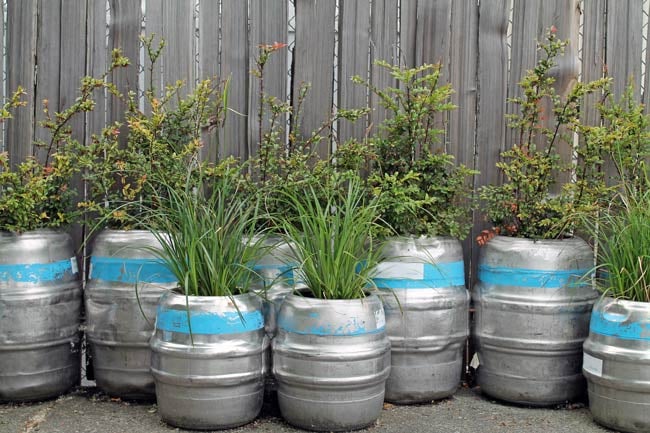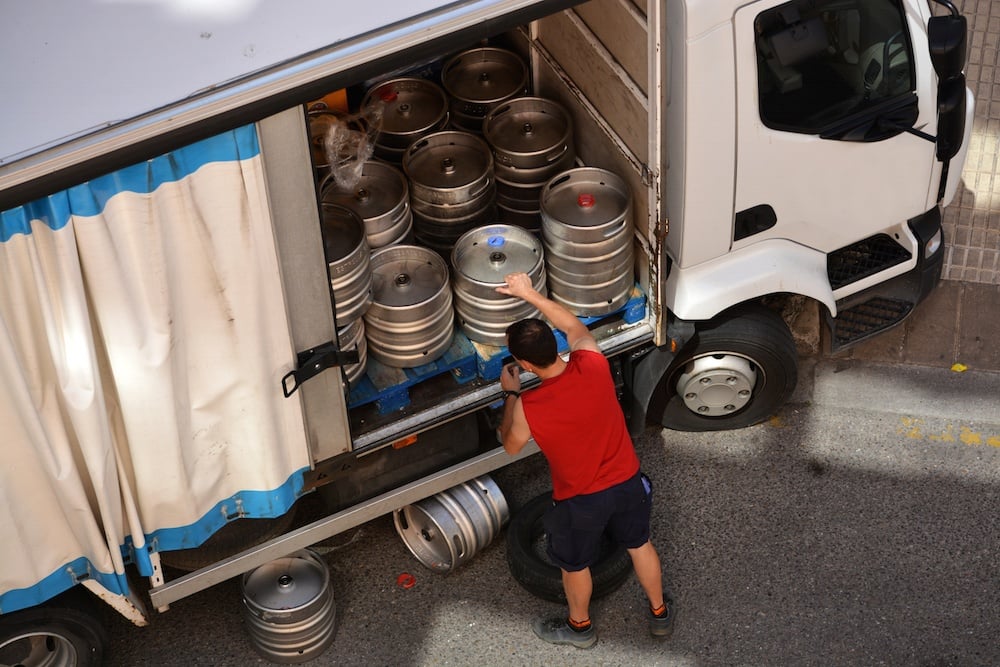Kegs have been the beer storage and serving standard for a very long time. At first, kegs were more convenient than their previous counterparts, wooden casks. But for the last 50 years kegs have remain unchanged and might be starting down the road of obsolescence. Here are a few ways kegs could be costing you money:
1. Kegs Require a Lot of Labor
As you probably know, kegs require a lot of man hours. You have to move them, stack them, unstack them, clean them, and fill them. It never stops.
Let's say you spend 15 hours a week cleaning, filling, and handling kegs. That works out to 98 work days a year! That is a significant amount of time. Now imagine gaining back an extra three months a year, by serving from something that doesn't require constant moving and cleaning, like a serving beer tank. You could spend those 98 days developing new beer recipes, marketing your brewery, making improvements, and planning your expansion.
2. Kegs Take Up Cold Storage Space
Full kegs need to be stored in a cooler. If you serve even a moderate volume of beer, you will need a large cooler to store your kegs.
Let's say you brew your beer in 16 barrel batches. For every beer you have on tap, you will need enough cold storage for 32 ½ barrel kegs. If you have five beers on tap, then you will have 160 kegs in cold storage. Most breweries store eight kegs per pallet and stack the pallets two high. If you leave enough room to operate a pallet stacker, you will need to have 180 ft² of cold storage space just for kegs.
You can drastically reduce your cold storage needs as well as your utility costs by serving out of jacketed vessels that do not need to be in cold storage.
3. Kegs Like to Disappear

In 2007 The Beer Institute reported that $50 million worth of kegs go missing each year. That is $58.5 million in today's money.
Ken Grossman, founder of Sierra Nevada Brewing Co., says that they expect to lose 3 percent of their kegs each year. If your brewer has 1,000 kegs in rotation and loses 3 percent of them, that is 30 kegs a year. At $150 a keg, that is $4,500 lost every year!
4. Kegs Lead to Beer Loss
Every time foam comes out of the tap and is poured down the drain or kegs are swapped out with some beer still in them, you are losing out on sales.
A discussion in the Beer Advocate Forums suggest that you lose anywhere from 5-10 percent of your beer when using kegs. A 7.5 percent loss works out to nine pints of beer you could have served to a paying customer. Over the course of a year, losing nine pints per keg, those losses really add up. Serving 25 barrels of beer a week at $4.00 per pint, that is is over $93,000 dollars a year in wasted beer! Download the  to get an idea of how much potential sales you are pouring down the drain.
to get an idea of how much potential sales you are pouring down the drain.
How Much Are Kegs Costing You?
Your brewery operation is likely just as unique as your beers. You can get a rough idea of how your beer serving costs break down by using the  . After entering some specific details about your brewery, you get monthly and yearly expense figures for labor relating to serving beer, beer waste, and cleaning costs.
. After entering some specific details about your brewery, you get monthly and yearly expense figures for labor relating to serving beer, beer waste, and cleaning costs.
Using this information, you can start to weigh the other beer serving options, such as serving beer tanks. It is very likely that an investment in new beer serving technology can pay for itself quicker than you think.



